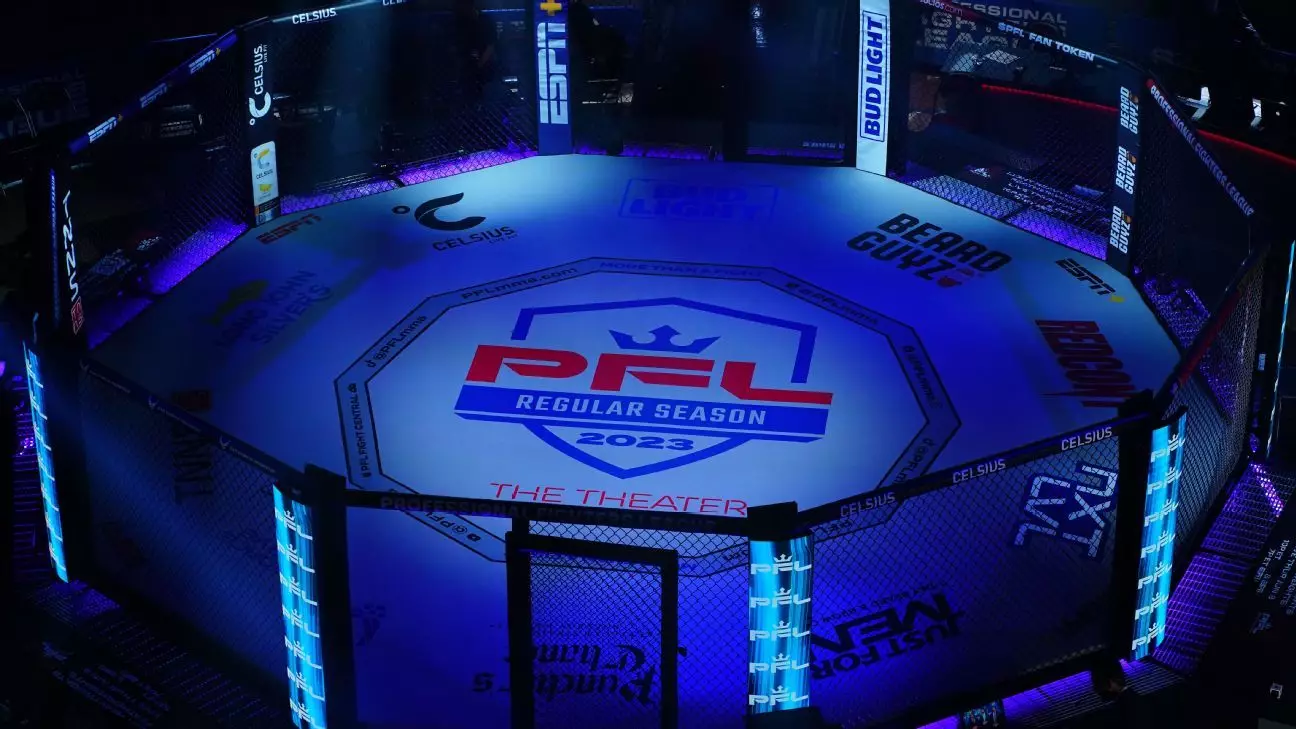Mixed Martial Arts (MMA) is dynamic, constantly evolving to captivate audiences and heighten competition. As one of the significant players in the sport, the Professional Fighters League (PFL) is taking bold steps to redefine its structure in 2025. This article delves into the anticipated changes, analyses their implications, and discusses the PFL’s strategy moving forward.
The most noteworthy transformation the PFL is introducing is a complete revamp of its World Tournament format. Traditionally, the league has operated within a season and playoff structure, which shaped its identity since its inception in 2018. However, starting in 2025, the PFL will pivot to a single-elimination format, marking a dramatic shift in how tournaments will be conducted. Each weight class will encapsulate eight fighters, escalating the tension and stakes in every match as competitors battle for the ultimate title in a compressed timeframe from April to August.
CEO Peter Murray expressed that this evolution is designed to create a more merit-based atmosphere and enhance viewer engagement. By narrowing the window of competition and emphasizing a one-shot opportunity, the PFL aims to attract a broader audience. This fresh approach can be seen as a calculated risk—while it promises excitement and a gripping narrative arc for fans, it places a greater burden on fighters who must consistently perform under immense pressure.
The End of the Bellator Era
Another significant shift for the PFL in its new chapter is the decision to cease promoting events under the Bellator MMA name. Following the acquisition of Bellator in late 2023, it was anticipated that both promotions would coexist; however, they will now operate under a singular banner. This shift effectively marks the end of Bellator, an organization established in 2008 and once a major competitor within the MMA landscape.
With this transition, the PFL will streamline its championship structure. The aim is to crown one undisputed champion in each weight class, discarding the dual-title system that previously existed with Bellator and PFL titles. While it is still unclear how the existing Bellator champions will fit into this new structure, the integration of Bellator’s roster promises to create an enriched competitive scene.
Parallel to these structural changes, the PFL is pursuing an ambitious global expansion strategy. The introduction of PFL Africa, alongside PFL Europe and PFL MENA (Middle East and North Africa), represents a significant geographical outreach. This diversification not only enhances the promotion’s influence but also contributes to its long-term vision of becoming a global force in the MMA world.
Murray emphasized the significance of this global strategy, highlighting the key role that fighters like Francis Ngannou, born in Cameroon, play in this vision. As the PFL navigates a new era, the diverse fabric of athletic talent across various regions contributes to a more comprehensive representation of fighters, broadening its appeal and enhancing competitive diversity.
Despite these sweeping transitions, questions remain about the impact on individual fighters, especially from Bellator. Over the past year, several notable athletes have voiced dissatisfaction with how their integration into the PFL has been handled. The releases of top fighters like featherweight champion Patricio “Pitbull” Freire and former middleweight champion Gegard Mousasi have raised eyebrows, igniting speculation regarding the league’s internal dynamics.
Murray has maintained that a substantial number of Bellator fighters plan to stay on with the PFL, aligning with the promotion’s core values. This kind of roster turnover—exceeding 30% annually—suggests that PFL is keen on fresh talent while still ensuring that seasoned competitors remain an integral part of its identity.
Financial Incentives and Future Prospects
In terms of financial remuneration, the PFL is set to enhance its prize structure. While previous seasons have offered a $1 million prize for championship victories across six weight classes, the upcoming tournament will feature eight classes with a total prize pool exceeding $20 million, offering $500,000 for each finals fight. This ambitious payout aims to incentivize competitors and draw in more elite fighters as the PFL seeks to bolster its status in the league of MMA promotions.
Looking ahead to 2025, the value of pay-per-view (PPV) events remains uncertain following last year’s heavyweight bout between Ngannou and Renan Ferreira. Murray has acknowledged Ngannou’s importance in the promotion’s strategy and expressed optimism about upcoming matches. If Ngannou returns to the PFL fold, it could significantly influence the organization’s trajectory and market appeal.
As the PFL prepares for its transformative phase in 2025, all eyes will be on how these changes will unfold. The new approach promises heightened competition, an invigorated roster, and broader global outreach. While the success of this evolution depends on numerous factors, it undoubtedly positions the PFL as a formidable contender in the continually evolving landscape of mixed martial arts. With a fresh format and ambitious expansion strategies, the PFL isn’t merely adjusting—it’s aiming to lead.


Leave a Reply